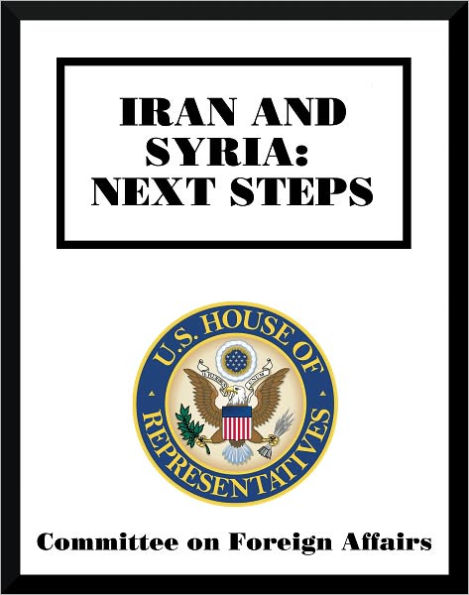Iran and Syria: Next Steps
The date of May 24th, 2011 - a watershed in our efforts to confront the Iranian-Syria axis over their nuclear programs - passed with little fanfare. On May 24th, the International Atomic Energy Agency (IAEA) issued two damning reports with respect to the nuclear programs of Iran and Syria. The first, with respect to Iran, cited significant increases in the production rate of low enriched uranium. Most concerning, it also cited "current undisclosed nuclear related activities involving military related organizations, including activities related to the development of nuclear payload for a missile." Wisconsin Project on Nuclear Arms control estimates that as of April 2011, Iran's stockpile of low enriched uranium provides enough material to fuel four nuclear bombs. Additionally, the report detailed a list of seven nuclear activities exclusive to a nuclear weapons
program that Iran has refused to explain.
The report with respect to Syria outlines in detail the evidence it has collected of a suspected covert nuclear reactor building under construction in Syria which was destroyed by Israel in September 2007. Syria has long denied that it was building a covert nuclear reactor, and systematically denied the IAEA access to the site.
The level of specificity in the descriptions of the activities and the publicizing of information in each report suggests that the IAEA believes its evidence is credible. Thus, the nuclear ambitions of both Tehran and Damascus have been laid bare.
1111650540
program that Iran has refused to explain.
The report with respect to Syria outlines in detail the evidence it has collected of a suspected covert nuclear reactor building under construction in Syria which was destroyed by Israel in September 2007. Syria has long denied that it was building a covert nuclear reactor, and systematically denied the IAEA access to the site.
The level of specificity in the descriptions of the activities and the publicizing of information in each report suggests that the IAEA believes its evidence is credible. Thus, the nuclear ambitions of both Tehran and Damascus have been laid bare.
Iran and Syria: Next Steps
The date of May 24th, 2011 - a watershed in our efforts to confront the Iranian-Syria axis over their nuclear programs - passed with little fanfare. On May 24th, the International Atomic Energy Agency (IAEA) issued two damning reports with respect to the nuclear programs of Iran and Syria. The first, with respect to Iran, cited significant increases in the production rate of low enriched uranium. Most concerning, it also cited "current undisclosed nuclear related activities involving military related organizations, including activities related to the development of nuclear payload for a missile." Wisconsin Project on Nuclear Arms control estimates that as of April 2011, Iran's stockpile of low enriched uranium provides enough material to fuel four nuclear bombs. Additionally, the report detailed a list of seven nuclear activities exclusive to a nuclear weapons
program that Iran has refused to explain.
The report with respect to Syria outlines in detail the evidence it has collected of a suspected covert nuclear reactor building under construction in Syria which was destroyed by Israel in September 2007. Syria has long denied that it was building a covert nuclear reactor, and systematically denied the IAEA access to the site.
The level of specificity in the descriptions of the activities and the publicizing of information in each report suggests that the IAEA believes its evidence is credible. Thus, the nuclear ambitions of both Tehran and Damascus have been laid bare.
program that Iran has refused to explain.
The report with respect to Syria outlines in detail the evidence it has collected of a suspected covert nuclear reactor building under construction in Syria which was destroyed by Israel in September 2007. Syria has long denied that it was building a covert nuclear reactor, and systematically denied the IAEA access to the site.
The level of specificity in the descriptions of the activities and the publicizing of information in each report suggests that the IAEA believes its evidence is credible. Thus, the nuclear ambitions of both Tehran and Damascus have been laid bare.
9.99
In Stock
5
1

Iran and Syria: Next Steps

Iran and Syria: Next Steps
eBook
$9.99
Related collections and offers
9.99
In Stock

Product Details
| BN ID: | 2940013505018 |
|---|---|
| Publisher: | U.S. House of Representatives |
| Publication date: | 11/20/2011 |
| Sold by: | Barnes & Noble |
| Format: | eBook |
| File size: | 530 KB |
From the B&N Reads Blog
